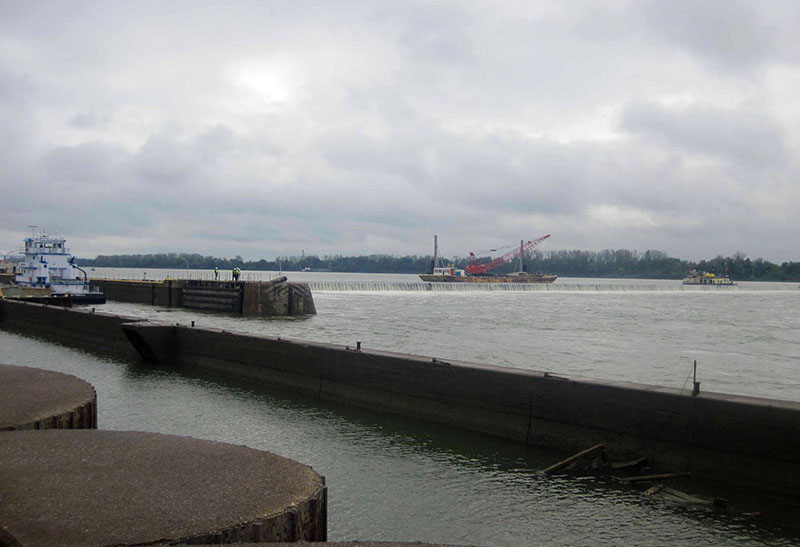Thanks to Donald Trump, the poor state of the U.S. inland waterway system is getting some national attention.
The president-elect didn’t specifically mention waterways during his campaign or since his election, but he has made investment in the nation’s crumbling infrastructure a central part of his agenda. No specifics have emerged on how Trump would pay for his $1 trillion spending plan, but there have been rumblings about raising much of the money from the private sector, with a proposed tax credit offered in return for investments in such projects.
This infrastructure focus by the president-elect led the The New York Times to publish an article on Nov. 23 demonstrating how aging locks and dams are causing bottlenecks and delays that threaten the effectiveness of the U.S. transportation system.
The article focused on Locks and Dams 52 and 53, located near the mouth of the Ohio River, which is one of the the busiest spots on the inland waterways and handles more than 80 million tons of grain, coal and other commodities each year. Both locks were built in the 1920s and will be replaced by the Olmsted Locks and Dam “which is decades behind schedule and billions over budget.”
Lock 52, the article notes, “is a serious bottleneck in innumerable supply chains nationwide. It is emblematic of the nation’s crumbling transportation infrastructure coast to coast — including locks, ports, highways and railroads.” The article follows Lock 52’s lock master, and includes the perspective from a towboat as it waits to pass through the lock.
Should Lock 52 fail, the tonnage would likely gravitate to rail and truck, but in this case the railroads aren’t nearby and there’s no room on the highways. The Times article said that while trucks and rails carry most domestic goods, 72% of international trade moved on the water in 2014. “Many supply chains rely on multiple modes of transportation, and no single mode has enough redundancy to accommodate the goods of another,” the article said.
At this point, Trump’s plan remains vague, which gives the workboat industry and waterways users the opportunity to influence the outcome and make sure that the plan not only includes waterways, but does so in a way that doesn’t hurt the barge industry. If a tax credit is pushed, private companies that would build a lock might impose user fees or tolls for commercial users. This would not be acceptable to the barge industry, as it would increase operating costs and eventual commodity prices that will be passed on to consumers. The user fee concept has already been shot down by Congress when proposed in the past.
But it’s good to have a pledge to address ailing infrastructure topping the presidential priorities list, and having national exposure in the Times helps spotlight the need of waterways improvements to national policymakers. We at WorkBoat have been covering this issue for decades, and will have a new report on it in the January issue.




